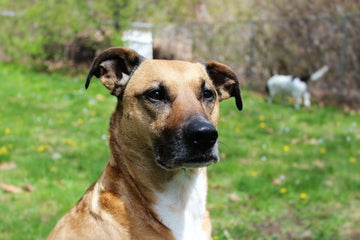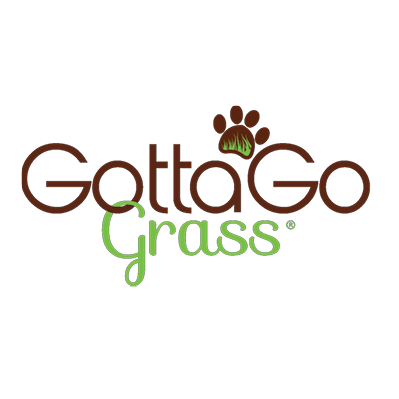
House training a rescue dog isn't much different from training a new puppy. Many adult dogs from shelters may have already been trained in their previous homes, so it's mainly about reinforcing positive habits and helping your furry friend adapt to their new environment.
Don't Assume Your Rescue Dog is House Trained
Despite any previous housetraining, you should assume that your new dog has zero potty training experience and start training from scratch. Rescue dogs come from diverse backgrounds, with some potentially never having been house-trained before. Others may have developed good potty habits but might have been in situations that affected their routines.
Additionally, it's essential for both you and your new dog to become familiar with each other's signals and routines. Even with dog potty training experience, not recognizing their bathroom signals can lead to misunderstandings, potentially resulting in accidents indoors.
5 Tips for Potty Training a Rescue Dog
In the initial weeks of welcoming your new dog, it's essential to approach housetraining with patience, consistency, and optimism. The goal is to help them acclimate to their surroundings, learn new smells, understand house rules, and adjust to a new schedule.
Understand Your Dog's Signal When They Have to Go Potty
Every dog uses a different signal to tell when they have to go potty, such as sniffing, barking, scratching the floor, or going to the door. Some dogs, especially small ones, may not signal at all. Until you understand your dog's cue, take them to their toilet regularly—whether that means taking them outdoors or to their indoor grass pad for dogs.
Once your pet is in their designated toilet area, use a consistent command or phrase to signify their action. With time, your dog will associate that command, and you can use it to prompt them to go potty on cue.
Set Clear House Training Rules
Setting clear and consistent rules is key to effective house training. For your dog, this means being rewarded when they use their pee pads or being interrupted when caught in the act and taken to their designated potty area. This approach removes ambiguity, making it clear to your dog where and when they should potty.

Create a Conducive Environment for Potty Training
During training, keep your dog confined or in your view consistently to avoid accidents. Using tools like a leash, dog crate for crate training, or baby gates proves valuable in restricting your dog's access indoors and encouraging the desired behavior of relieving themselves in designated areas.
Set a Consistent Schedule for Feeding and Potty Breaks
Support your housebreaking efforts by creating a consistent schedule for your dog's meals and bathroom breaks, and stick to it consistently. Take your dog out at fixed times daily—ideally within 15-30 minutes after eating, drinking, or waking up from sleep and every 2 hours throughout the day. Smaller dogs, puppies, and aging dogs with urinary issues may require more frequent trips to the bathroom.
Reward a Positive Behavior
Each time your dog successfully goes to the bathroom outside or on their training pads, offer immediate praise to reinforce this positive behavior. Your pet must associate their actions with the reward, so consider reserving special treats for these occasions.
You can also use play as a form of positive reinforcement for successful potty behavior. Instead of bringing your dog inside immediately after they've done their business, spend a few minutes playing with them. This helps your dog perceive the act of going potty as a positive experience, encouraging them to repeat it.
Accidents are Bound to Happen—Even in Fully-Trained Dogs
Even with successful potty training, occasional accidents are part of owning an adult dog. In these situations, be sure to react calmly and positively. If you catch your pet in the act, do not scold or punish them, as this may create fear or anxiety. Instead, interrupt the behavior and take your dog outside or to their pee pads. Encourage them to finish their business and praise them when they do so.
When you discover an accident late, resist the urge to reprimand your dog—they will not associate the scolding with the past accident. Clean the area thoroughly to remove any lingering scent, reducing the likelihood of your dog returning to the same location.
READ: What Should You Not Do When Potty Training Your Puppy

Potty Train Your Rescue Dog with Gotta Go Grass Reusable Pee Pads
Potty training a rescue dog may present challenges, but you can set your pet up for success with proper knowledge and tools.
Gotta Go Grass are real grass dog potty pads that can support you in this journey. Our natural grass pads are super absorbent, soaking moisture and neutralizing urine odors more effectively than synthetic alternatives.
Our grass pad solutions provide the added benefit of recreating the sensory experience dogs associate with potty, encouraging them to use the dog pee pads again. They require little maintenance and can last for weeks, facilitating easy clean-up and promoting a sanitary environment.
By integrating these innovative puppy pads into your training routine, you not only facilitate a successful training process but also provide your rescue dog with a reliable and comfortable space to relieve themselves, reinforcing positive bathroom habits.
Shop for Gotta Go Grass reusable grass packs on our website today!




